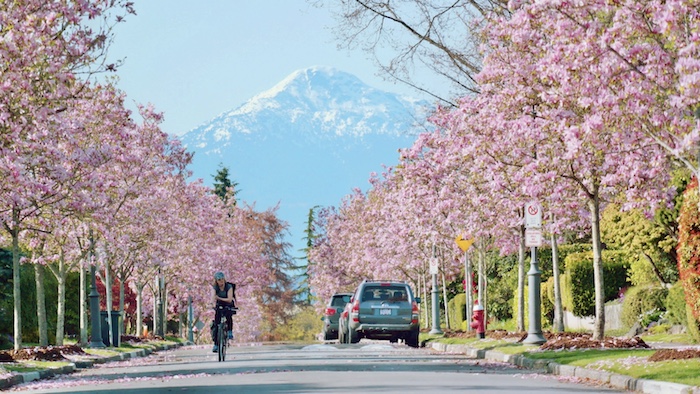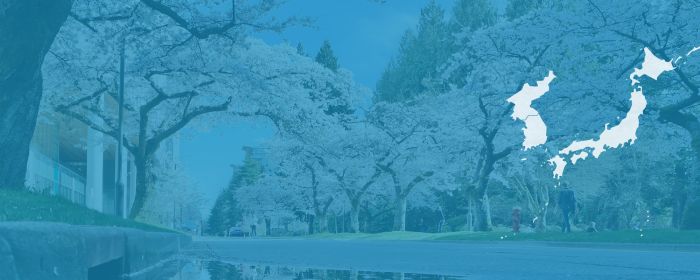The Takeaway
As cherry blossom festivals return to Japan and South Korea after a COVID-19 hiatus, visitors are beginning to enjoy the festivities without masks. Cherry blossoms have held a cultural and economic significance in the region for centuries. However, businesses are worried about the impact of the trees’ unexpected, record-early blooming on tourism flows, while environmentalists worry the premature bloom may negatively affect the broader ecosystem.
In Brief
On March 14, the Japan Meteorological Agency spotted over five blossoms on Tokyo’s designated cherry tree at Yasukuni Shrine, and subsequently announced that Tokyo’s cherry blossoms were blooming. Similarly, on March 25, the Korea Meteorological Agency reported cherry blossoms blooming in Seoul, with more than three cherry blossoms on a branch of the designated cherry blossom tree at the Seoul weather station. Although the observation methods differed, both cases presented record-early cherry blossom seasons in each country.
Cherry blossom viewing is a highly anticipated event in Japan. Yahoo Data Solution reported that 4.8 million people in Japan searched for ‘sakura’ (i.e. cherry blossoms) in March 2022, while 4.58 million did so in April 2022. ‘Momiji’ (i.e. Japanese maples representing autumn foliage) received 1.83 million searches in October 2022 and 2.95 million in November 2022.

Similarly, millions of South Koreans visit famous cherry blossom festivals, including events in Jinhae, South Gyeongsang Province, and Yeouido, Seoul, which are among the over 200 local cherry blossom festivals. However, the unpredictable early cherry blossom season makes it challenging to forecast seasonal demands and maximize economic benefits for local businesses.
Experts have raised the alarm over changes in weather patterns and the early blooming of cherry blossoms, pointing toward an impending environmental crisis. Cherry blossoms are crucial for maintaining biodiversity as they are a food source for bees, butterflies, and other insects — all essential for pollination. Falling petals from cherry trees also support the growth of nearby plants by enriching the soil.
Implications
Cherry blossoms hold significant cultural and spiritual meaning in Japan and South Korea, representing the transient nature of life, a new beginning, purity, and beauty. They also evoke nostalgia and are associated with romanticism. The tradition of cherry blossom viewing involves picnicking with loved ones, known as ‘hanami’ in Japan and ‘beotkkot nori’ in South Korea. In Japan, cherry blossoms coincide with the graduation and back-to-school seasons, which adds to its emotional significance. However, the early blooming of cherry blossoms may disrupt these cultural patterns in the future.
Cherry blossoms drive tourism and boost local economies by increasing revenue for businesses, hotels, and restaurants, as well as through job creation. This year’s sakura-generated economy is estimated to be worth around C$6.5 billion (615.8 billion yen) in Japan, and likely has a similar economic significance in South Korea. Early blooming can lead to lower attendance at festivals and events if blossoming peaks before the scheduled dates. In response, some local governments in South Korea, such as Andong and Gyeongju, have advanced or scaled down their festival schedules, incurring additional costs.
The onset of an early cherry blossom season may also cause mismatches between flowering and pollinator emergence, jeopardizing the reproduction and survival of plant and animal species. Adverse weather conditions, such as spring frost or drought, may damage or limit the growth of flowers. Changes in the timing of cherry blossom blooming could also alter the migration patterns of birds and insects, disrupting food chains. An earlier bloom may also impact the timing and intensity of ecological interactions among different species, affecting the timing of leaf emergence and other phenological events in the ecosystem.
What's Next
- Cherry blossom trees as a symbol of friendship between Japan and other countries
Since the early 20th century, Japan has donated thousands of cherry blossom trees to Canada and countries around the world as a symbol of friendship. The annual cherry blossom season in Japan also draws many South Koreans, improving cultural ties between the two countries.
- More research on cherry blossom trees
Cherry blossom trees have potential benefits beyond aesthetics. The National Forest Research Institute in South Korea calculated that 250 cherry blossom trees can offset the annual carbon dioxide emissions from a single car in South Korea, about 2.4 tonnes. The institute has been developing varieties that are large, abundant, and have high greenhouse gas absorption abilities to make cherry blossom trees more suitable for use as “street trees.”
- More advanced forecast models for cherry blossoms
Advanced forecast models for cherry blossoms are being developed with artificial intelligence (AI) and data collection. The Kyoto-based Shimadzu Business System created a predictive AI model using a large amount of weather data. Its AI observations suggest that certain regions, such as Kagoshima and Miyazaki prefectures, may not see cherry blossoms by 2100 if climate change worsens. Japanese weather company Weathernews receives real-time photos from users to adjust actual blooming timing. These models aim to more accurately predict cherry blossom blooming.
• Produced by CAST’s Northeast Asia team: Dr. Scott Harrison (Senior Program Manager); Momo Sakudo (Analyst); Tae Yeon Eom (Analyst); and Sue Jeong (Analyst).




